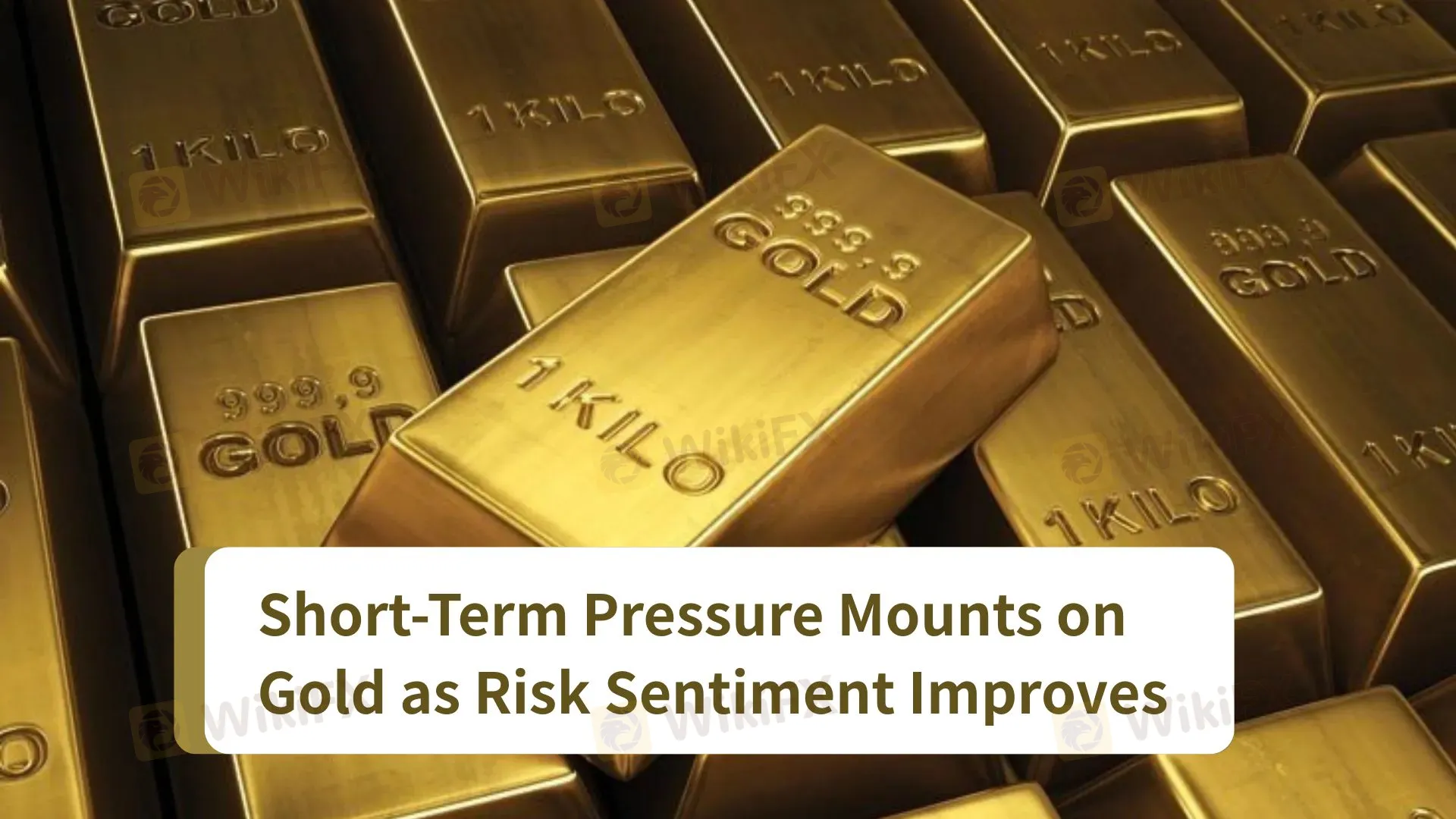简体中文
繁體中文
English
Pусский
日本語
ภาษาไทย
Tiếng Việt
Bahasa Indonesia
Español
हिन्दी
Filippiiniläinen
Français
Deutsch
Português
Türkçe
한국어
العربية
Short-Term Pressure Mounts on Gold as Risk Sentiment Improves
Abstract:Despite a stronger dollar and rising equities, gold’s retreat appears to be a temporary correction rather than a trend reversal.

Gold Faces Short-Term Setback, But Long-Term Potential Remains Intact
The price of gold has come under notable pressure recently, sliding more than 3% amid a broad shift in market sentiment. The shift follows a wave of optimism in financial markets triggered by easing trade tensions and a rebound in equities. While the short-term trend for gold appears negative, the underlying factors that supported its historic rally remain largely intact, pointing to continued longer-term potential.
Recent Market Reactions Weigh on Gold
Investor enthusiasm has surged in recent sessions, leading to strong gains in global equities and a firmer U.S. dollar. These conditions typically weigh on traditional safe-haven assets like gold. As investors embraced risk-on sentiment, capital rotated away from defensive assets. Gold, which had been on a remarkable upward trend for months, was not immune to the broader sell-off
The dollar‘s resurgence added further downward pressure. As a dollar-denominated asset, gold becomes less attractive to foreign buyers when the dollar appreciates. With both risk appetite rising and the greenback strengthening, it’s unsurprising that gold prices retreated. Yet this retreat should be seen more as a tactical correction than a reversal of the long-term trend.
Support and Resistance Levels to Watch
From a technical perspective, gold now finds support near the $3,200 level. Should this floor give way, further pullbacks could test the $3,150 or even the $3,000 zones. Still, despite these downside risks, gold has yet to break the broader bullish pattern that has defined its recent price action. Unless a consistent series of lower lows begins to form, the longer-term uptrend remains valid.

On the upside, resistance is gathering in the $3,269–$3,275 area. A sustained move above that could open the path toward $3,360 and $3,400, eventually setting up a retest of the all-time high near $3,500. Such a move would require a fresh wave of demand—possibly from renewed macro uncertainty or a weakening dollar.
Upcoming Data May Shift Momentum
Market participants are now eyeing key economic indicators for clues on golds next move. The upcoming U.S. Consumer Price Index (CPI) report and consumer sentiment readings will provide insight into inflation trends and household confidence. A drop in inflation expectations, especially in light of reduced input costs, could ease upward pressure on gold.
That said, if the economic data disappoints or growth indicators soften, gold may find renewed support. It remains a popular hedge not only against inflation but also against broader uncertainty—be it from financial instability, slowing economic momentum, or asset market volatility.
Longer-Term Fundamentals Remain Supportive
Despite the recent correction, the longer-term outlook for gold remains constructive. Structural demand from central banks, continued diversification away from yield-based assets, and long-term concerns about currency stability all contribute to sustained interest in the yellow metal.
While gold may continue to trade under pressure in the near term as markets digest the latest macro developments, it would be premature to count it out. The environment that enabled gold to surge in recent years—uncertainty, demand for alternative stores of value, and global economic shifts—has not fundamentally changed.
In short, gold may be cooling off for now, but its role in a diversified portfolio remains as relevant as ever.
Disclaimer:
The views in this article only represent the author's personal views, and do not constitute investment advice on this platform. This platform does not guarantee the accuracy, completeness and timeliness of the information in the article, and will not be liable for any loss caused by the use of or reliance on the information in the article.
Read more

BlackBull: A Closer Look at Its Licenses
When selecting a broker, understanding its regulatory standing is an important part of assessing overall reliability. For traders seeking to protect their capital, ensuring that a platform operates under recognised and stringent oversight can make all the difference. Keep reading to learn more about BlackBull and its licenses.

Dark Side of AETOS: They Don’t Want You to Know
AETOS is an Australia-based broker. All over the internet, you will find positive reviews about this broker, but no one is talking about the risks involved with AETOS. However, we have exposed the hidden risks associated with AETOS

Contemplating Investments in Quotex? Abandon Your Plan Before You Lose All Your Funds
Have you received calls from Quotex executives claiming to offer you returns of over 50% per month? Do you face both deposit and withdrawal issues at this company? Or have you faced a complete scam trading with this forex broker? You're not alone. Here is the exposure story.

15 Brokers FCA Says "Are Operating Illegally" Beware!
If a reputable regulator issues a warning about unlicensed brokers, it's important to take it seriously — whether you're a trader or an investor. Here is a list you can check out- be cautious and avoid getting involved with these scam brokers.
WikiFX Broker
Latest News
Scam Alert: Revealing Top Four Forex Scam Tactics Employed to Dupe Investors
Meta says it won't sign Europe AI agreement, calling it an overreach that will stunt growth
Ether and trading stocks take the crypto spotlight as Congress passes historic stablecoin bill
Inflation outlook tumbles to pre-tariff levels in latest University of Michigan survey
Peter Thiel-backed cryptocurrency exchange Bullish files to go public on NYSE
What a Trump, Powell faceoff means for your money
Ether takes crypto spotlight as Congress passes historic stablecoin bill
Exness Halts New India Accounts Amid Regulatory Change
eToro and BridgeWise Launch AI Smart Portfolio for US Mid-Cap Stocks
Forex.com vs OANDA: A No-Nonsense Comparison That Actually Helps You Decide
Currency Calculator


